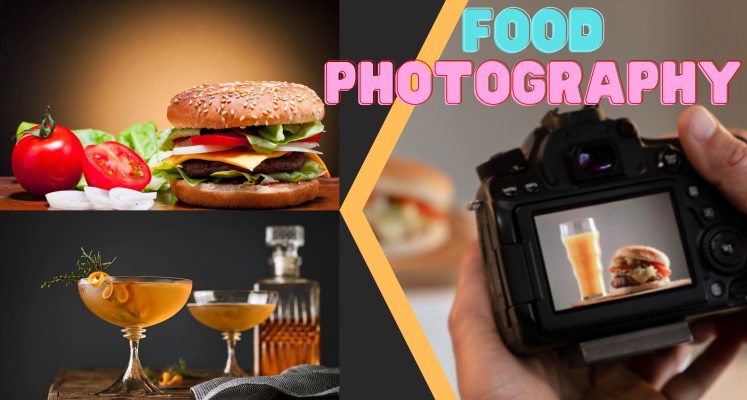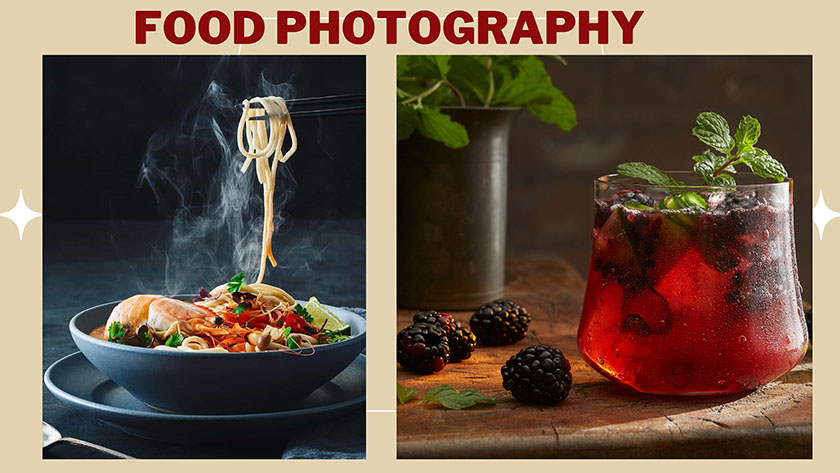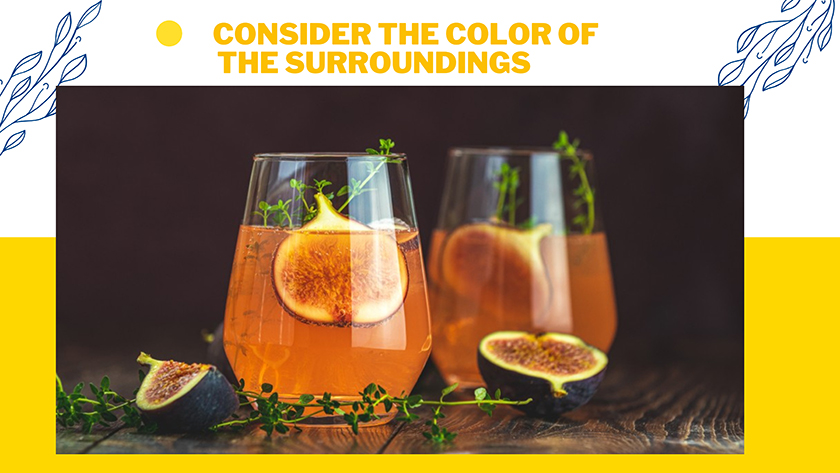Introduction
Photography is an excellent way to gather memories in one frame. Also, it is a fantastic method to do business. Nowadays, people can run their businesses in different fields by clicking photos of foods, clothes, shoes, furniture, handicrafts, etc.
Although I am not doing business, I also love to take photographs of dresses, food, flowers, etc. But I especially enjoy clicking photos of food. And today, I am writing to share some food photography ideas with you.
Do you want to get a complete guide to food photography? Take a chill pill because you will get all of the necessary information regarding food photography in this article.
Food Photography: What Is It?
Capturing photographs of foods comes in the category of food photography. And in food photography, the photographer uses appetizing and eye-catching photography techniques to capture images of foods, drinks, and supplies.
Additionally, the primary focus of the photography is food. It could be a single spice, ingredient, or entire meal. Moreover, each photographer has their style when it comes to food photography.
But the photograph must capture the client’s taste for whom you are taking it. So, in addition to making the food seem mouthwatering, a skilled food photographer also needs to highlight the background information.
Food Photography: The Types
You can divide food photography into three categories. They are editorial, advertising, and packaging. So, let’s take a closer look at each one of them.
Editorial
Artistic food photography includes editorial photography. You can include the editorial food images in newspapers, blogs, magazines, recipe books, etc.
Generally, editorial food images are not taken for commercial use. But an individual takes an editorial food photograph to provide the food and its surroundings aesthetic look.
Editorial photography is the best type among both experienced and novice food photographers. The reason is that editorial food photographers need not account for their work to their clients. They are free to do their job in their preferred way.
Advertising
Restaurant menus, leaflets, pamphlets, and Facebook and Instagram promotional posts utilize food images for advertising purposes. The food images should encourage customers to use a service or purchase a product.

Restaurant menus, leaflets, pamphlets, and Facebook and Instagram promotional posts utilize food images for advertising purposes. The food images should encourage customers to use a service or purchase a product.
You can utilize decorative items and props in entirely different ways to spotlight your food in a delightful way. And to do this, you may take the assistance of a food artist.
However, you must comprehend your client’s needs to highlight them in the photograph with suitable colors and backgrounds. Lastly, whatever you decide to shoot the food with, it must highlight the food’s best qualities and reflect the brand’s personality.
Packaging
In the case of packaging, you are supposed to take photos of foods that have been packaged using technological equipment. In this type of food photography, you need preciseness, expert lighting, and photo-editing abilities.
You must prominently display the theme of product packaging through the images. Additionally, you help customers be informed about the contents of a product through the packaging. Consequently, a studio is suitable for taking food photographs.
As a result, presenting the correct food item is crucial. Besides, you should take photos in a way that the food seems natural and enticing to the buyer.
Food Photography: Things To Consider Before Taking Photos
“A complete guide to food photography” will be incomplete without some consideration before taking food photos. There are many techniques and strategies you may use to enhance your skills. I have provided a complete guide to assist you in improving your food photography below:
Consider Your Food’s Color Composition
Light plays a crucial role when you are taking pictures of food. When taking photos, you often may include herbs that are in sharp contrast to the main course. Adding herbs, you can give your picture a highlight color.
However, you can shoot better food photos if you understand the technique of reading color wheels and color contrast. Moreover, in addition to the food, the plate’s surroundings also affect how the photo looks.
Consider The Color Of The Surroundings
You should also consider the cutlery’s color carefully. The reason is that it dramatically affects the final result because it surrounds the main component.
You can select the color to complement or contrast one another (food and the surrounding). However, you can effectively utilize any variation.
Lighting
Photographing food requires soft lighting. Even though natural light is preferable, what if it is midday?
Another way to achieve this effect is to surround the setup with a large lightbox. Additionally, you can consider white tissue as the ideal filtration. And you may create the filtration by removing the tops and edges of a carton.
Thus, you leave only the base framework behind. After that, you can insert the white tissue in the removed parts of the carton’s place. Throughout the entire process, the light is evenly spread.
Lenses For Cameras
Fixed or prime lenses are typically the best choices for food photography. The reason is that these lenses can manage the focus depth more quickly because of their bigger openings.
Moreover, I typically recommend a prime lens measuring 50mm or 80mm for food photography when using a fully integrated camera. However, the image size of your lens is multiplied by the reduction factor to determine the exact image size that will display in your images.
Angles Of The Camera
One of the most prominent shots to take a food photo is precisely above the food. However, it is not always the most pleasant way to take pictures. And if you are trying to capture food with heights and layers, nothing will be visible from above.
Try taking pictures of the food from the front in those foods with layers. After that, you can gradually increase the angle to 25 degrees and 75 degrees.
Food Photography: The Accessories
In the following section, you will get some vital accessories for taking photographs.
Tripod
You may require a reliable tripod for taking still photos or recording videos while preparing food or dining. There are numerous varieties of tripods available.
You may pick a tripod that fits your needs and your approach to food photography. Moreover, to take food photos anywhere you want, your tripod must be lightweight while still being strong.
Kit For Lighting
An excellent choice for capturing food photos is a strobe light. Through a strobe light, the food receives natural light. Thus, the food appears fresh because of the strobe light, and the photographs get more genuine color.
Backgrounds
You may utilize backgrounds matching your meal if you photograph food in a studio or at your home. For instance, hardwood or stone surfaces are excellent backgrounds for food photography. Furthermore, you can utilize a Flashpoint photographic board to take food photos in the studio and for business.
Food Photography: Fixing Common Problems With Food Photography
Frustrated with the quality of your food photography? Continue reading for possible fixes:
Solution Of Blurry Photos
Camera movement is the reason for taking blurry photographs. The following are some solutions:
- Keep the camera straight.
- Get a tripod and remote control to keep your camera motionless while taking pictures.
- Employ faster speeds of the shutter, which demands either widening the lens or going to a brighter location.
- In order to reduce the quantity of light required, increase your ISO.
Solution Of Unrealistic Food Photographs
Use the white balance settings in your editing program to correct any plates of food that appear overly pink, blue, green, or yellow. The proper white balance settings bring colors to life. However, you will find it simpler to correct the color balance later if you capture photos in RAW format.
Solution Of Taking Unprofessional Photographs
Food photographers with knowledge utilize camera lenses. They use camera lenses because it enables them to focus close on their subject by reducing the focus depth.
Later, they adjust their images’ levels, contrast, and clarity using photography tools. However, a photo can sometimes really shine with only a few minor changes.
Frequently Asked Questions
Which Mode Is Ideal For Photographing Food?
Av mode is ideal for taking food photographs. It is because the av mode can adjust the speeds of the shutter. Thus, this mode can help you to achieve the ideal lighting for your object.
What Is The Food Photography Golden Ratio?
The food photography golden ratio is 1:1.168. This age-old numerical approach produces a harmonious and well-balanced composition.
How Do I Concentrate When Taking Food Photos?
When you take food photos, you should focus on the front part of the food. Additionally, the viewer’s focus will be drawn to this, and the image will have an attractive background blur.
However, photographing food with this effect is appealing. Another good location to put the emphasis is on the decorations.
How Can Food Be Made Shiny?
One of the most common methods for enhancing the appearance of food is glycerin. Glycerin is the ready solution for food that requires a glossy or shining appearance to ensure food cravings.
What Are The Talents In Photography?
The ability to take and create high-end images is known as the talent in photography. Firstly, photography talents comprise the artistic ability required to take original photographs. Secondly, it comprises technical knowledge of maintaining the camera accessories and retouching the captured photo.
What Is The Trick To Taking Quality Photos?
For an image to be considered excellent, many factors must work together in photography. A lot of composition and interest may be added to images by combining several elements, including forms, lines, lighting, patterns, texture, and color.
Wrap Up
At the end of the article, I would like to say that if you read this article entitled “complete guide to food photography“, I will be blessed, and you will also be beneficial. In this article, you can have some crucial information like some considerations before taking food photos, the types of food photography, the accessories, and the troubleshooting of food photographs.
Therefore, if you go through the article, your knowledge regarding food photography will be enhanced. Additionally, you may get influenced to take food photos.








